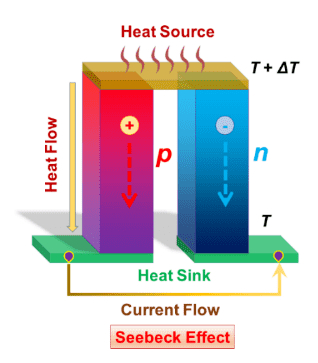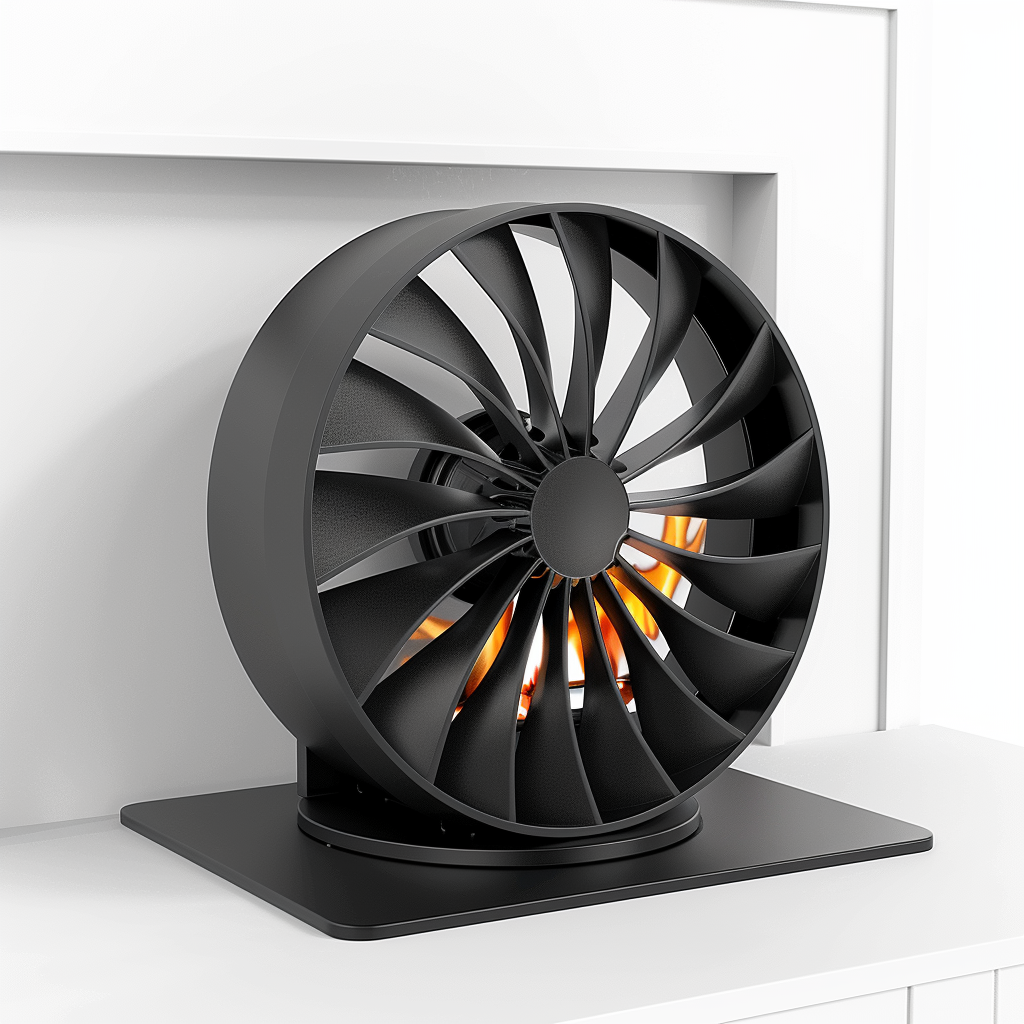From fireplace fans to car exhaust, see how FerroTec Pioneer Thermoelectric performs "temperature difference power generation"?
As people's pursuit of quality of life continues to improve, more and more families choose to use fireplaces for heating in winter. At this time, placing a small unplugged fan next to the fireplace can make the indoor warmth much higher. This unplugged fan is called a "fireplace fan", and this warming phenomenon is essentially due to "temperature difference power generation".
1. Thermoelectric power generation principle: Seebeck effect
The term "thermoelectric power generation" may sound advanced at first, but it is no longer a new technology. As early as the 19th century, German physicist Thomas Johann Seebeck discovered the principle of thermoelectric power generation - the "Seebeck effect". The Seebeck effect is the first thermoelectric effect, which refers to the phenomenon that when there is a temperature difference between the junctions of two different materials, a voltage is generated at the junction. In simple terms, as long as a suitable temperature difference is created at both ends of the semiconductor material, thermal energy can be directly converted into electrical energy. Next, let's take a look at some common applications of thermoelectric power generation.

▲ Seebeck effect - reverse process of Peltier effect
2. Fireplace fan: a typical application of temperature difference power generation
In winter, when you light a fireplace, the surface temperature of the furnace can reach 100°C, while the temperature of the surrounding air is usually only around 20°C. At this time, the TEC power generation sheet in the fan base begins its work: one side of the power generation sheet is close to the high-temperature furnace body, and the other side faces the air; the temperature difference between the two ends triggers the Seebeck effect, allowing electrons to run from the high-temperature end to the low-temperature end, thereby generating current. In this way, the flowing heat generates electrical energy, which in turn drives the fan to rotate, transmitting warm air to every corner, increasing the heating efficiency of the fireplace by more than 30%.

▲Fireplace fan (typical application of temperature difference power generation)
3. Turning waste into electricity: Car exhaust can also generate electricity
Many people don't know that there is a lot of "wasted energy" hidden in car exhaust. The exhaust temperature from the exhaust pipe during driving is as high as 500℃, which is equivalent to the loss of nearly 30% of the fuel energy. Therefore, engineers came up with a clever idea - to install a "thermoelectric conversion module" (TEG, Thermoelectric Generator) on the exhaust pipe to reuse this part of the waste heat.

One side of the thermoelectric conversion module is in direct contact with the exhaust gas of the car and is responsible for absorbing the heat from the exhaust gas. On the other side, we usually use air cooling or water cooling to dissipate the heat to ensure that it approaches the ambient temperature. The temperature difference between the two sides is used to generate electricity, and the generated electricity is used to power the on-board electrical appliances, or stored in the battery as a backup.
4. More possibilities of temperature difference power generation
Since thermoelectric power generation has many advantages such as simple installation, quiet operation, no need for power connection, and easy maintenance, it has been widely used in aerospace and military fields as early as the 1960s. For example, the United States once used the temperature difference generated by radioactive isotopes to provide stable power for deep space probes for more than a decade.
In China, many researchers have also applied temperature difference power generation technology to the fields of exhaust heat recovery from thermal power plants and industrial waste gas power generation, so as to "pick up" and reuse the heat energy that was originally wasted.

However, the energy conversion efficiency of current commercial power generation panels is generally only 20%-25%, and the output power of a single panel is limited, which makes it difficult to meet the application scenarios with high energy demand. Therefore, to achieve large-scale application, it is necessary to match the energy storage system with multiple panels in series/parallel. Although the temperature difference power generation technology has become increasingly mature, it still needs to achieve optimization and breakthroughs in efficiency improvement, system integration and cost control before it can be widely popularized.
This article makes us realize more clearly that "thermoelectric power generation" is very close to life. The temperature difference near the fireplace, the waste heat of an exhaust pipe...these inconspicuous thermal energies have the opportunity to be converted into electrical energy. "Thermoelectric power generation" is no longer just a simple physical phenomenon in the laboratory, it is pointing out a new direction for the development of new energy in the future.



